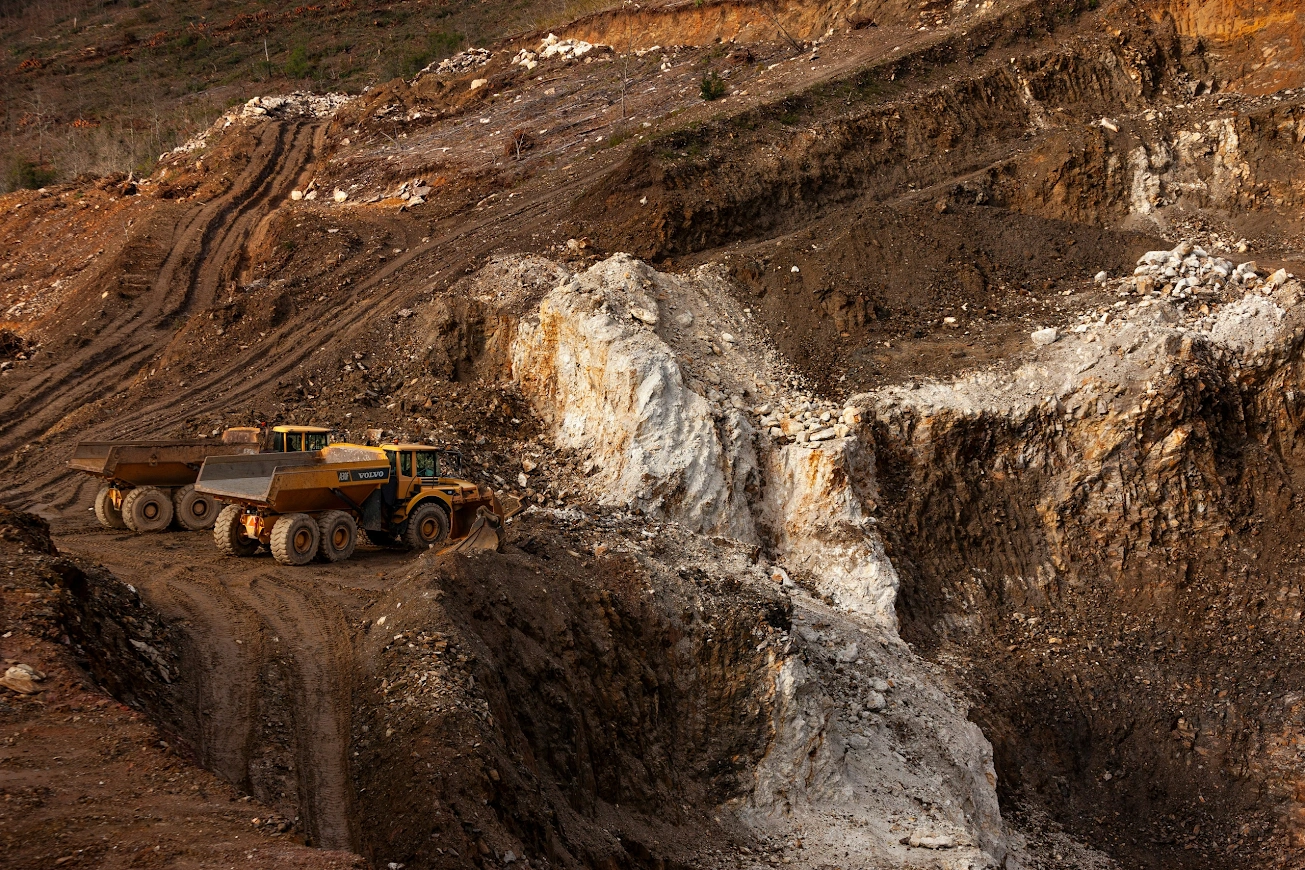02/05/2024
Long-range drones target strategic facilities deep within enemy territory, such as ammunition depots, production areas, and refineries. Long-range or strategic drones are a category of UAVs capable of covering hundreds to thousands of kilometers. The Russians have such drones, including their long-range drone productions. For instance, the Shahed-129 can travel approximately 1700 kilometers. Does Ukraine have such drones, and do they need them? For comments and clarifications, Molfar contacted several charitable foundations that organize fundraising for drones and oversee their delivery to military units.
Long-range drones have repeatedly demonstrated their effectiveness. For example, on April 20, drones struck the "Kardimovo" oil depot in the Smolensk region, causing a massive fire. In early April, drones simultaneously attacked an oil refinery and a facility where Russian Shahed drones are produced in Tatarstan.
Therefore, this article will explore why long-range drones are necessary and substantiate their effectiveness. We will also examine how long-range drones can impact the course of the war.
READ ALSO:
125% More Fire: What Burned in Russia in 2023
Ukrainians Crowdfund for Combat Drones
The Armed Forces of Ukraine are establishing a new branch — the Unmanned Systems Forces. As President Volodymyr Zelensky stated, "Unmanned systems have proven their effectiveness in battles on land, in the sky, and at sea. Ukraine has significantly altered the security situation in the Black Sea thanks to drones." On April 20, it was reported that the Russians had moved their missile carriers to the Caspian Sea, hiding them from drones.
Since 2014, when Russia began its war against Ukraine, volunteers have been actively raising funds for various needs of the military. The volunteer movement recognized the need to develop unmanned systems. Today, funds are raising billions of hryvnias for multiple types of UAVs.
Developing long-range UAVs requires innovation, technical capabilities, and, most importantly, significant funding. Throughout 2022–2023, Ukrainians have donated generously to drone development. In the first nine months of 2023, the three most significant funds raised 12.5 billion hryvnias ($333 million USD). The United24 platform received 7.94 billion hryvnias, or 63% of the total donations. The "Come Back Alive" foundation received just over 3 billion hryvnias, and the Serhiy Prytula Charity Foundation raised around 1.5 billion hryvnias.
The most significant portion of the funds collected was spent on the needs of the Armed Forces of Ukraine (AFU), with the United24 platform allocating 7.06 billion hryvnias, which amounts to 89% of the total funds raised.
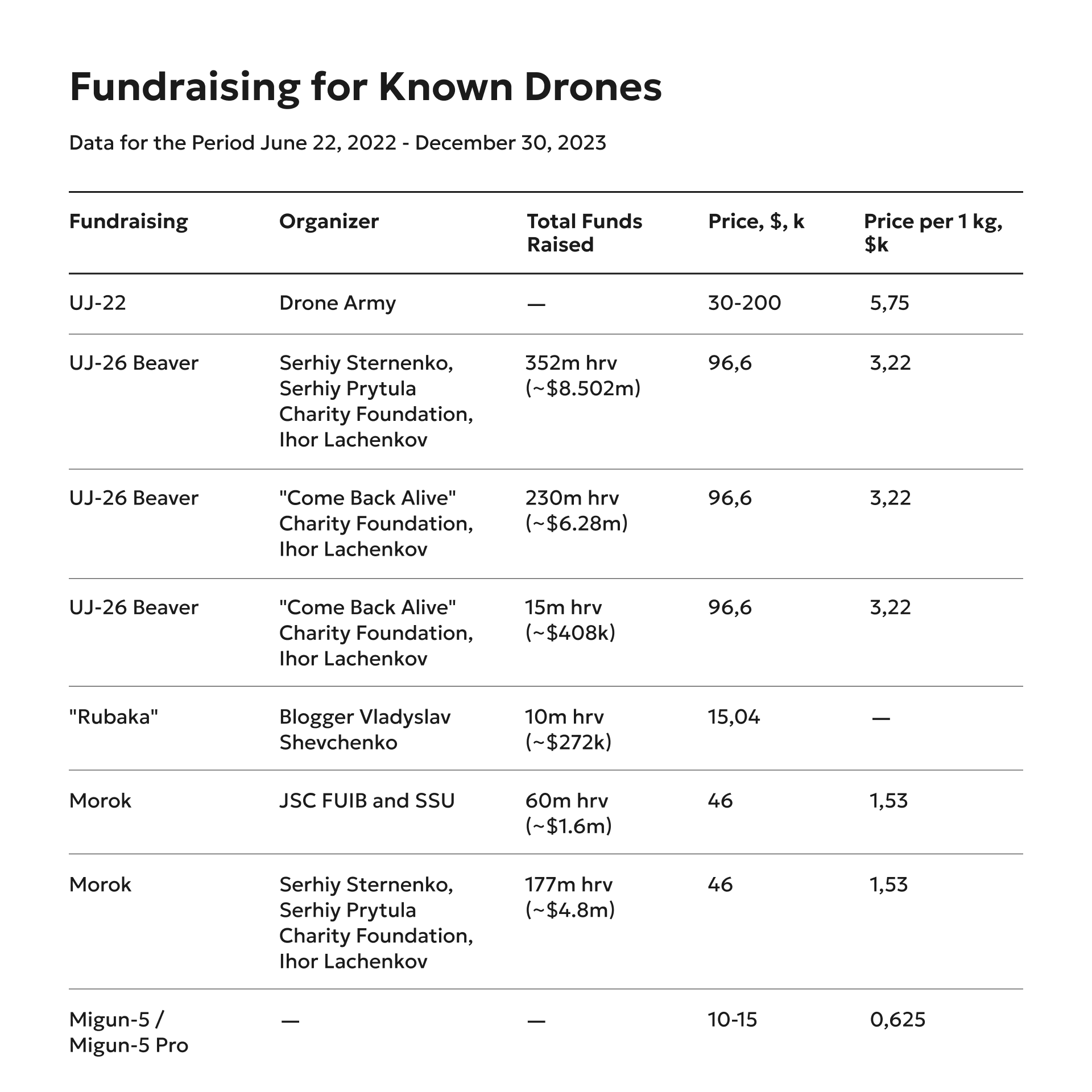
According to these data, the most donations were collected for the "UJ-26 Beaver" drones among all types of UAVs. Source: news media, Telegram channels, and insider information.
Molfar analysts have calculated that as of December 30, 2023, 33 foundations and private initiatives were raising funds for drones. These are specifically long-range drones capable of flying over 500 km. The total amount raised was 844 million UAH (excluding the sums raised for UJ-22 and Migun-5/Migun-5 Pro drones from the "Drone Army"). The estimated number of drones purchased is 267 units (excluding the "Drone Army" and "Black Box" projects, for which the number of drones purchased is unknown).
Separately, bloggers also raised funds for long-range drones — Vlad Shevchenko (10 million UAH — $252k USD), Dmytro Govorenko's charity foundation "Govorn Help" (20 million UAH $504k USD), and the JSC FUIB (Ukrainian — ПУМБ) bank together with the SSU (60 million UAH — $1.5 mln USD).
Let's briefly look at the drones for which funds have been raised:
- UJ-22 Airborne: a multipurpose UAV, adopted in 2020, produced by the company "UKRDZHET."
- UJ-26 Beaver: a long-range loitering munition.
- "Rubaka": a loitering munition that can fly 500 kilometers.
- "Morok": a long-range drone that can fly 800 kilometers.
Regarding the losses Russia has suffered due to long-range drone attacks, it's currently known that the aggressor state's economy has lost 12% of its oil extraction and refining capacity. Media reports indicate that Russia has requested 100,000 tons of gasoline from Kazakhstan. It seems that military actions and long-range drone strikes are creating additional challenges for the terrorist state's economy.
In March, however, the US allegedly asked Ukraine to stop attacks on Russian oil refineries, claiming it could raise global oil prices and provoke Russian retaliation. This information was disseminated by the Financial Times, among others, and was subsequently published by several Ukrainian media outlets (1, 2).
How Successful Are Ukrainian Drone Attacks?
Let's look at a few recent and well-known cases where drones attacked Russian territory. We considered public cases from June 22, 2022, to December 30, 2023. Here are some of them:
The Oil Refinery in Kardymovo
On April 20, 2024, drones visited 7 regions of Russia simultaneously. In the Smolensk region, near the village of Kardimovo, a fire broke out at an oil depot. The Russians themselves claimed to have successfully shot down 50 drones. However, videos circulating on social media show the oil depot ablaze. This refinery belongs to the Russian company LLC “Lukoil-Centernefteprodukt.”
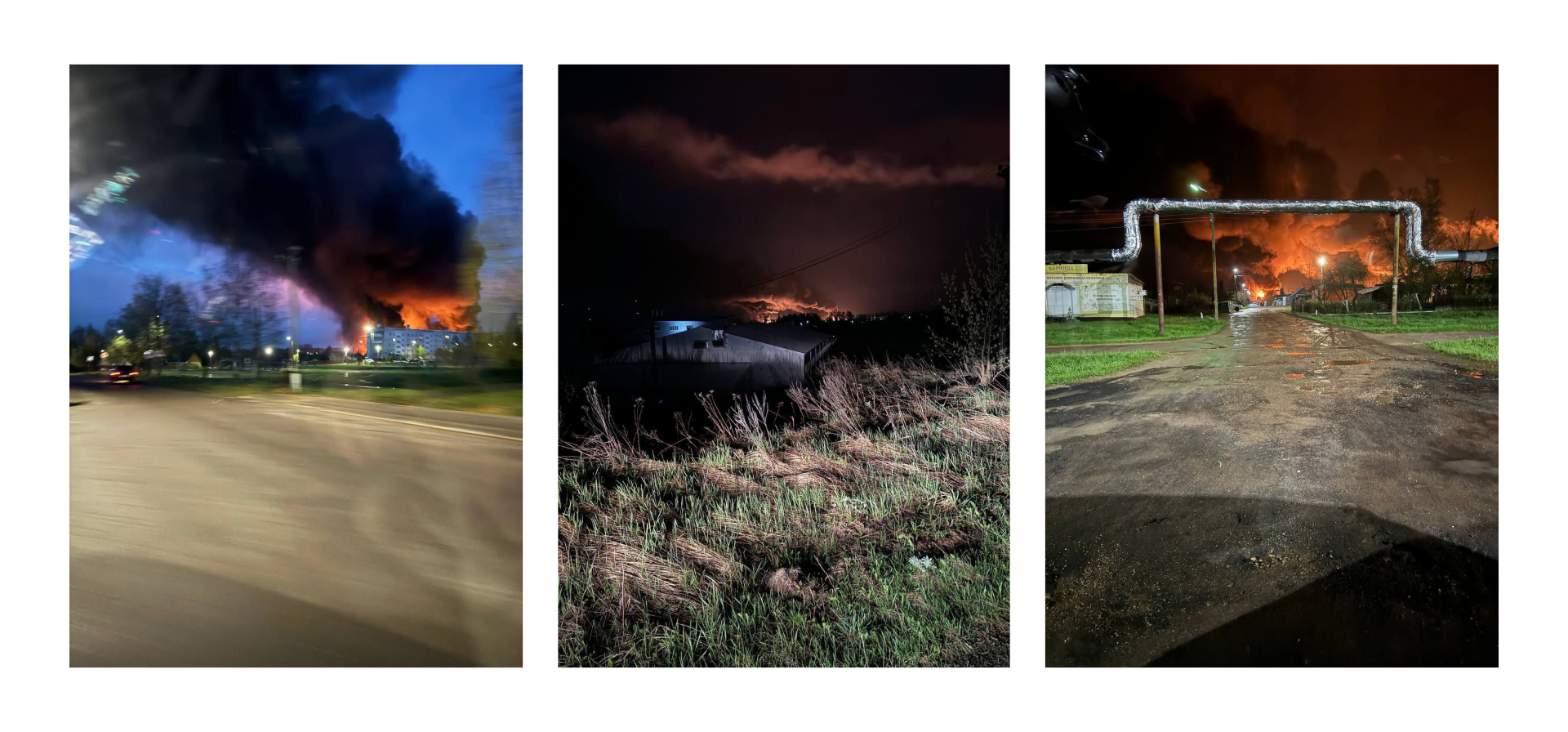
The Belarusian opposition media spread information that this oil depot was used as a logistical hub between Russia and Belarus.
The Shahed Factory-Warehouse in Yelabuga
On the morning of April 2, an unknown drone attacked the city of Yelabuga, where Russians manufacture Shahed drones. Two explosions were reported. This is the first time such an incident has occurred so deep within Russian territory, which is over 1200 km from the Ukrainian border. The attack targeted enterprises located in the "Alabuga" special economic zone. According to media reports and investigations by Molfar agency analysts, a plant producing Shahed kamikaze drones is located there.
READ ALSO: 43 employees of "Shahed" production in Alabuga: Molfar publishing the deanon
Attacks on Russian Oil Refineries in January
On January 24, 2024, drones operated by the Security Service of Ukraine (SBU) attacked an oil refinery in Tuapse, Krasnodar Krai. The attack resulted in a fire. The capacity of this refinery was 12 million tons per year. For comparison, a similar refinery in Nizhny Novgorod processed 17 million tons per year (it was also attacked shortly before this). According to NASDAQ exchange reports, oil processing in Tuapse was halted. As of early February, it had not resumed. There are no further mentions of the oil depot in Tuapse.
January was rich in "cotton" attacks on Russian oil refineries. These attacks included strikes on the oil terminal in St. Petersburg on January 18, an attack on the Rosneft oil depot in Bryansk Oblast on January 19, and an attack on the Novatek terminal in the port of Ust-Luga, Leningrad Oblast.
Twenty Drones Overnight — Nizhny Novgorod
On March 12, drones attacked fuel warehouses in the Oryol region. The attack caused a fire at the fuel storage facilities, which are located approximately 160 kilometers from the Ukrainian border. The attack also targeted the fuel and energy complex in the city of Kstovo, Nizhny Novgorod Oblast.
It was reported that Russians were attacking over two dozen Ukrainian drones during this time. Two of them reached as far as the Moscow region.
Why do Long-Range Drones Matter?
According to media Militarnyi experts, drones are classified as follows:
1. tactical;
2. operational-tactical;
3. operational;
4. strategic.
When we talk about "long-range drones" in this article, we refer to drones capable of flying over 500 km. However, it's worth noting that drones' flight range also depends on weather conditions and wind strength. Drones do not fly in a straight line and can make route adjustments, meaning the actual distance to the target may be shorter, while the route flown may be longer.
Long-range drones are characterized by their ability to cover significant distances without needing to return to the launch point. This capability is achieved through the use of efficient batteries, powerful engines, and optimized aerodynamic characteristics.
One of the critical features of long-range drones is their ability to maintain stable communication with the operator over long distances, allowing for real-time control and data transmission. This is achieved through enhanced communication and data transmission systems.
Such drones enable surveillance over long distances along the front line, gathering vital information about enemy troop movements and deployments. This assists the Ukrainian army in making informed decisions and planning operations based on the current situation.
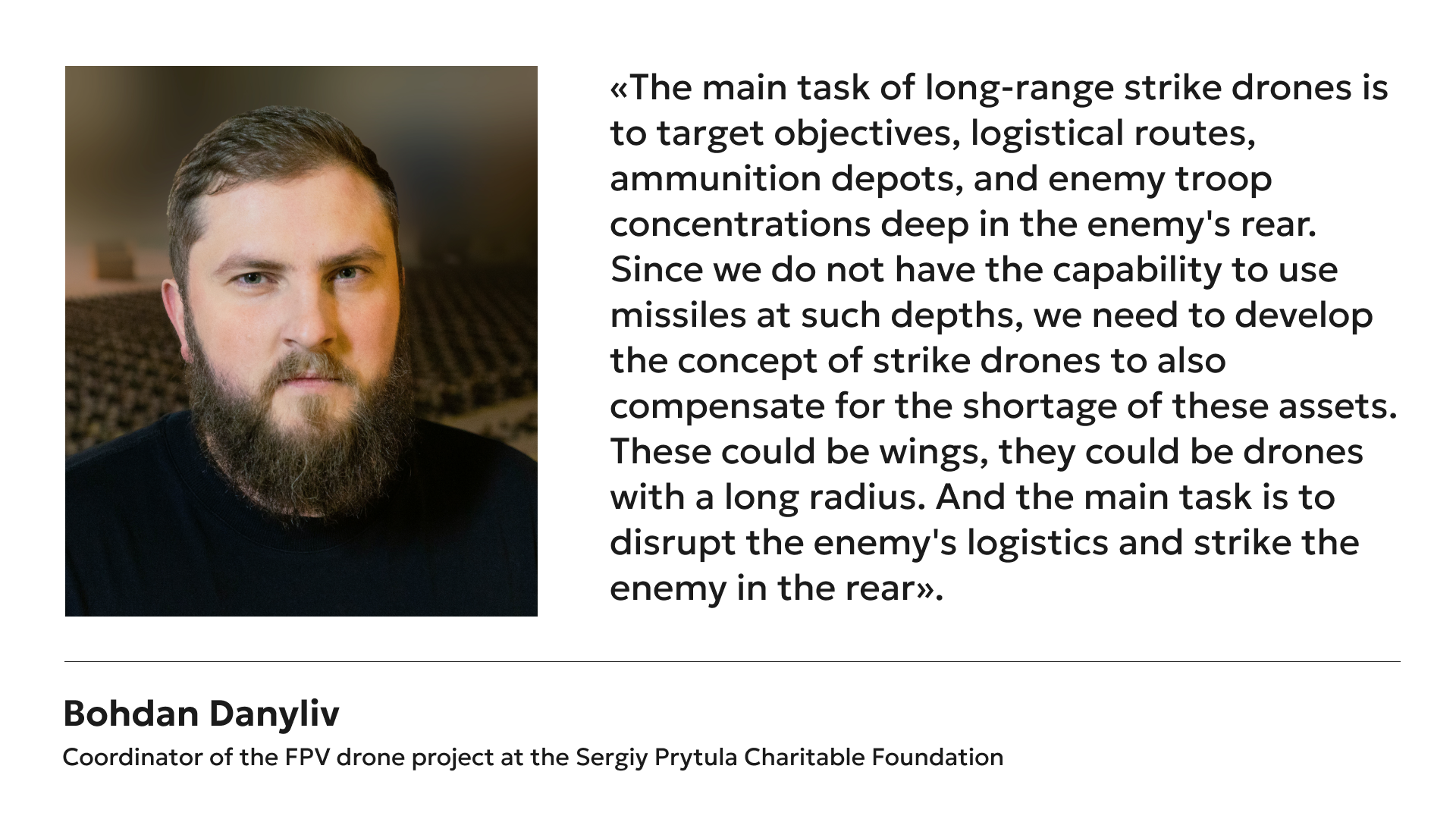
Long-range drones can target essential enemy assets and positions far beyond the front line. Additionally, the use of long-range drones reduces risks for civilian populations, such as those residing in temporarily occupied territories of Ukraine.
Ukrainian long-range drones
Among the most well-known survey, Ukrainian models are the uncrewed aerial vehicles "SHARK," "Leleka-100," "Furia," and "Valkyria," as well as the PD-2, known as the "People's Drone." Their primary purpose is to detect enemy positions and adjust artillery fire, including the use of long-range systems such as HIMARS.
One of the most mysterious projects is the Ukrainian kamikaze drone "Bober," developed by UkrJet. Its flight range can reach up to 1000 kilometers, although official data on this matter have not been disclosed.
There are speculations that these drones were involved in attacks on Tatarstan and, specifically, Yelabuga. There have also been reports of the detection of devices resembling UkrJet's UJ-22 Airborne product in the Russian capital. Another Ukrainian development in the field of kamikaze drones is the "RUBAKA," for which there is currently no publicly available information.
Responses of the Serhiy Prytula Charity Foundation and "Come Back Alive" Foundation to Molfar's inquiries about the production and development of their drones in Ukraine
The Sergiy Prytula Foundation notes that Ukraine has made significant progress in drone production over the past three years. While there were up to 20 UAV manufacturers at the start of the full-scale invasion, there are now more than one and a half hundred.
Ukrainian manufacturers create various types of drones — reconnaissance, reusable bombers, and kamikaze drones. New FPV wings are already being developed, increasing flight distances to 50 km. This could provide more significant opportunities for penetrating enemy territory and inflicting more damage on the Russians.
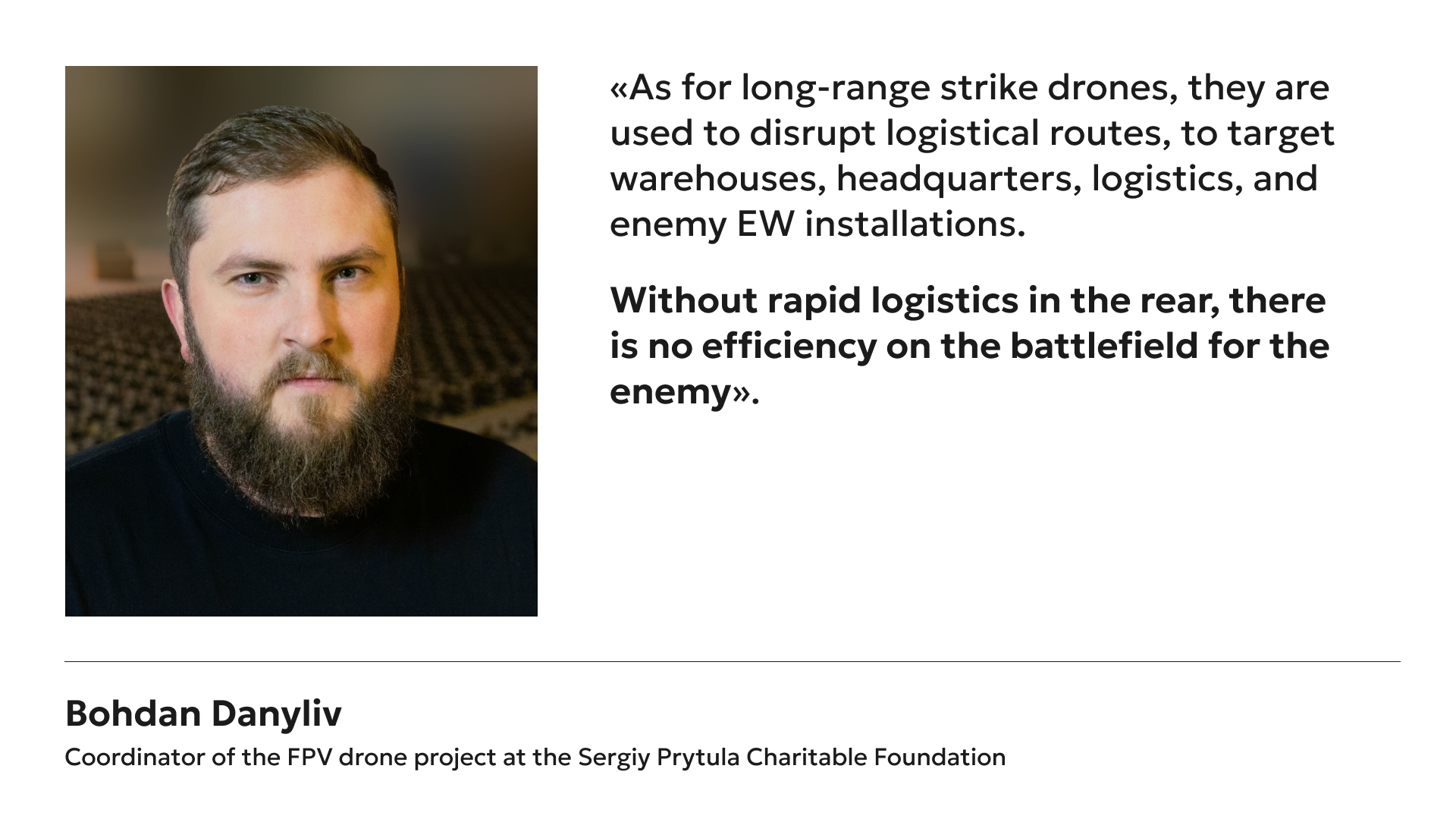
At the same time, they add that more drones will still be needed. But progress is evident. While in 2022, all UAVs in Ukrainian units were received only from volunteers, now the state has actively joined this process.
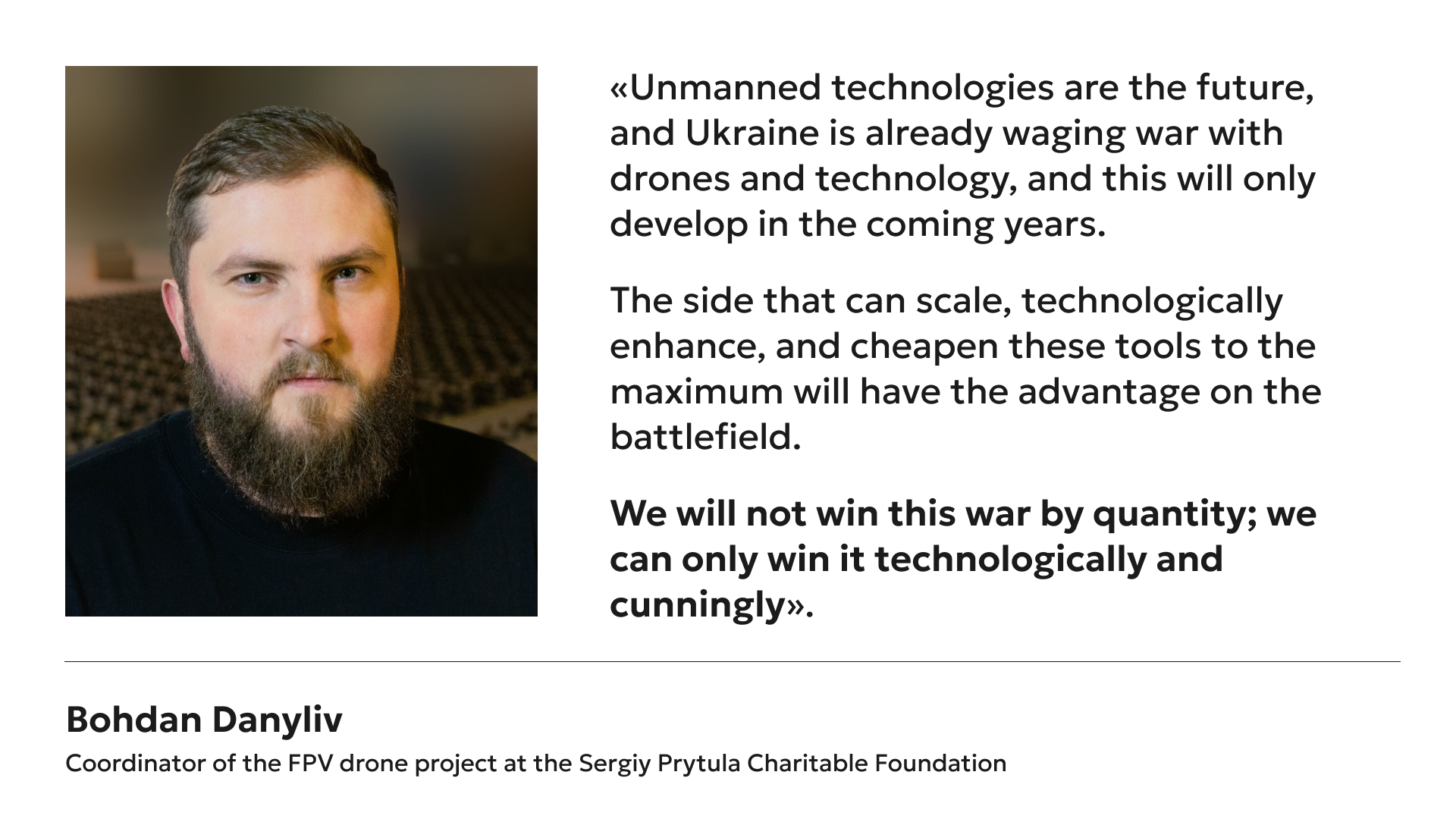
However, the successful application of long-range drones requires constant innovation and technical improvement. The "Come Back Alive" Foundation also pays attention to the quality of components. They also note the rapid development of long-range drone production.
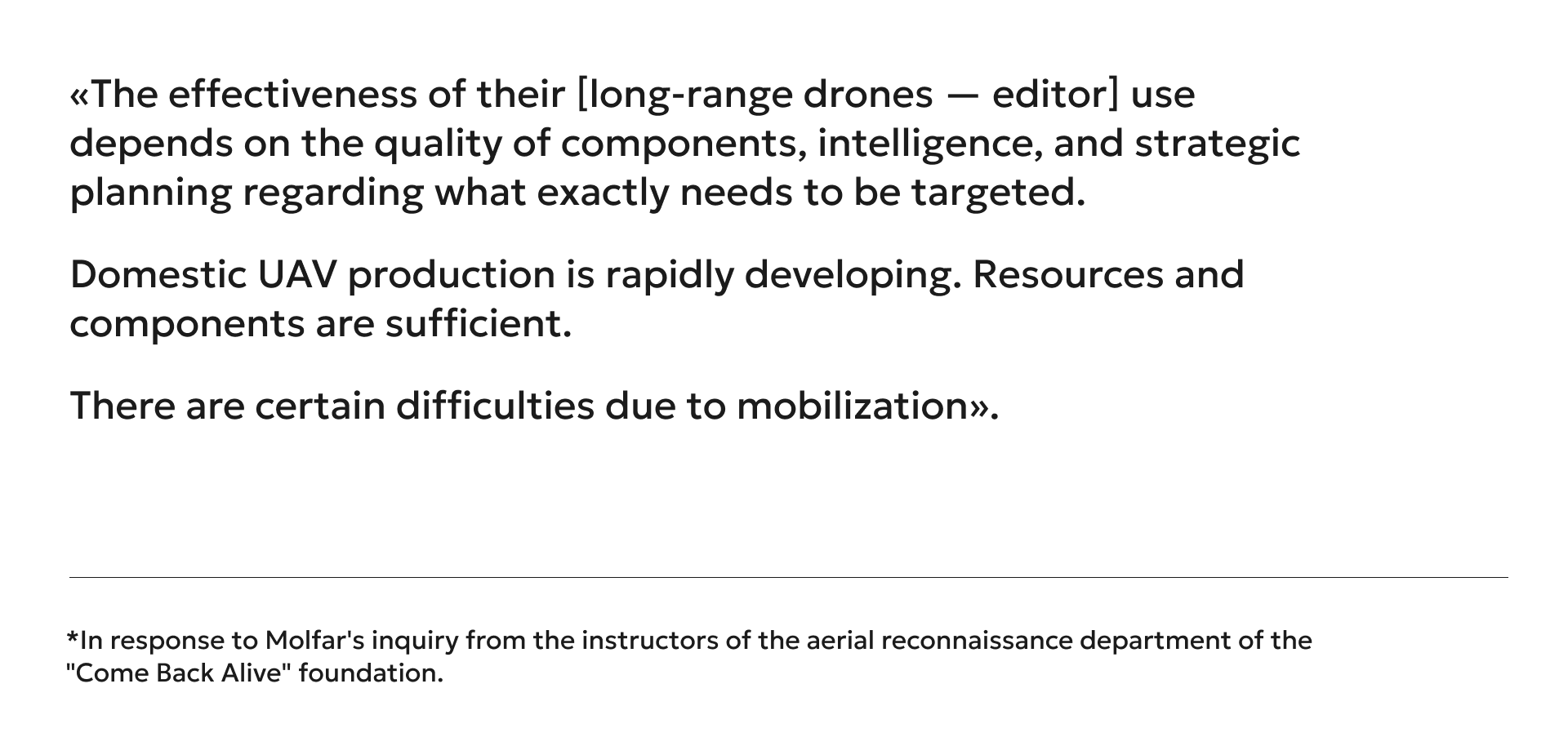
According to representatives of the "Come Back Alive" foundation, Russian Shahed drones are currently one of the biggest threats. The foundation states that these UAVs are mass-produced and effectively perform their function. At the same time, their cost is relatively low. It is worth noting that Ukraine is slowly but steadily establishing production of analogs to Russian drones. In particular, launching the production of drones similar to Russian "Lancets."
Assessing the effectiveness of kamikaze drones and strike drones, representatives of the "Come Back Alive" foundation shared their experience within the "Black Box" project. In November 2022, the foundation raised 230 million hryvnias for this project, aimed at reducing the enemy's offensive potential. "Come Back Alive," in cooperation with the Main Intelligence Directorate of the Ministry of Defense of Ukraine, acquired the Ukrainian drone "Bober," which became a vital component of this initiative.
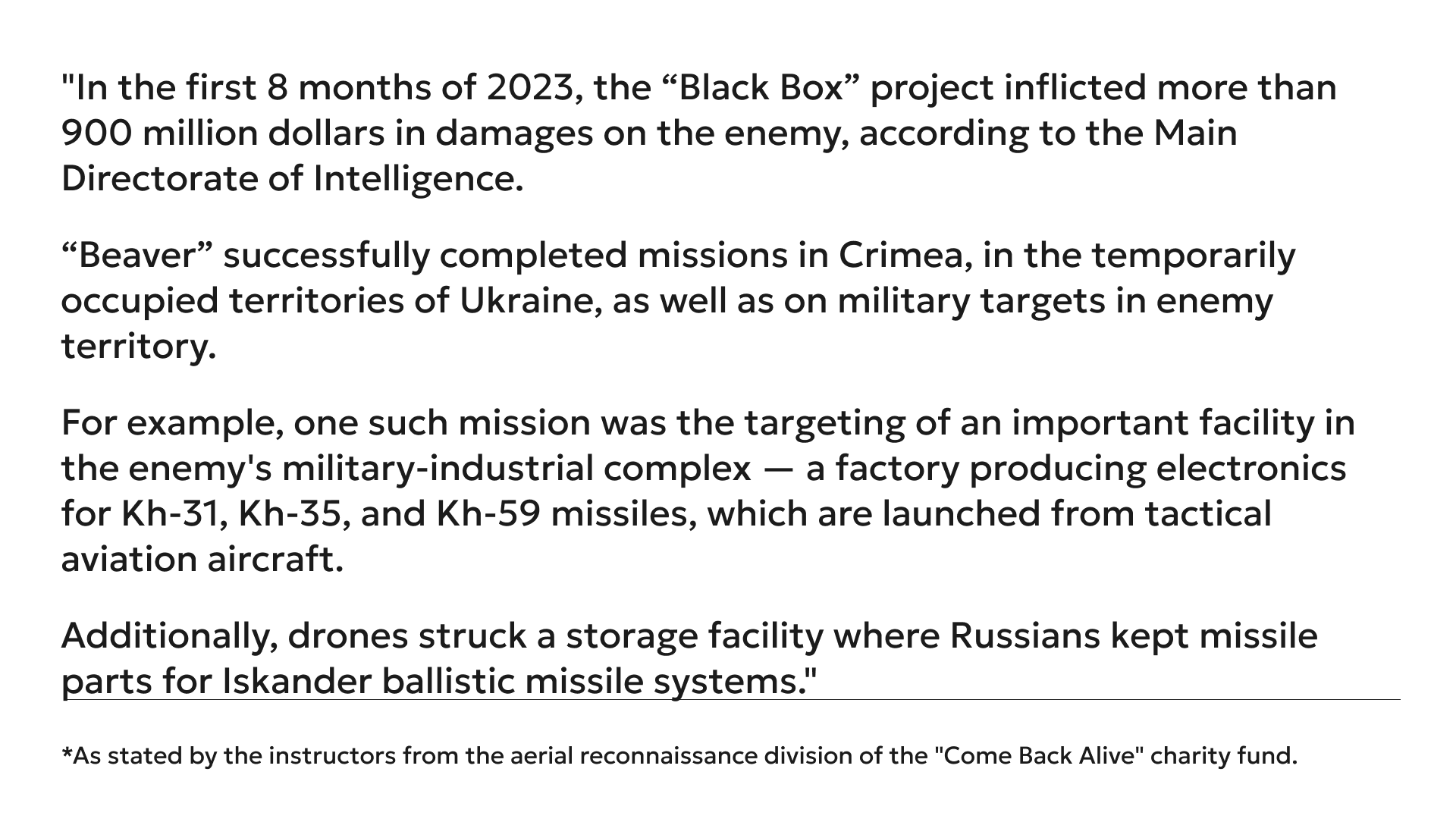
The effectiveness of modern drones proves their necessity on the battlefield. Volunteers play a crucial role in meeting the operational needs of the military. They quickly respond to urgent demands and fill gaps that require more time for the state. Volunteers actively finance the procurement and delivery of drones. There are instances where practical cooperation between the state and the volunteer movement can be observed.
Strategic attacks on the territory of the Russian aggressor are successful, as they have managed to reduce Russia's production capacities by 12%. In Ukraine, volunteer fundraisers actively finance the procurement and delivery of these drones to the military. We also witness the development and expansion of domestic production of long-range drones, as confirmed by charitable foundations.




